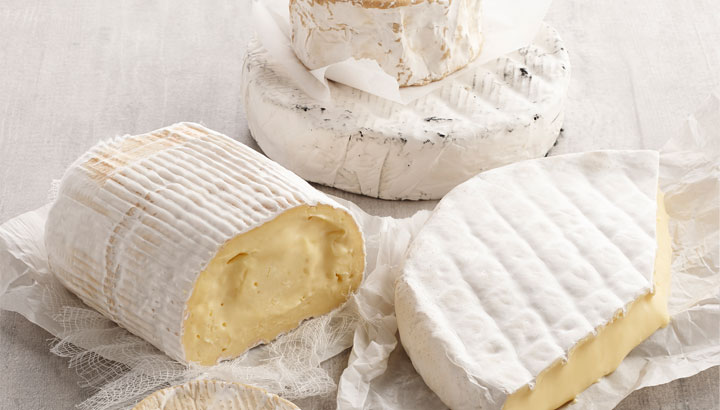
White mould cheese
What is white mould cheese?
Creamy, oozy, rich and delicately mottled, white mould cheeses are surface ripened and aged from the exterior to the interior of the cheese.
Different white mould cheese styles differ slightly but follow a similar pattern.
First, rennet, starter culture and white mould spores are added to milk, then the resulting curd is cut into cubes. The curds and whey mixture is stirred to release more whey, then placed in hoops. As whey drains off, the curds settle and start to knit together.
These hoops are transferred to a high humidity room and turned 2-4 times in 8 hours, then the cheese is salted and placed in humidity controlled rooms. Spores develop into a fluffy white mould over 6-10 days, forming the rind. The cheese is then wrapped, which stops the mould from growing further outward, and the mould begins to consume the acid in the cheese. This causes the pH level to rise, and protein to break down - which makes the cheese softer.
Read more about the various kinds of white mould cheese.
Types of white mould cheese
Brie originates from Briard, in France. The rind shows slight pigmentation when fully mature, with a soft and creamy centre. It should taste buttery, with rich complex mushroom flavours.
Traditionally camembert is smaller than brie, although today it is available in various sizes. In Australia, there is usually less butterfat in camembert than brie. The rind shows pigmentation as it ages, and ripened Camembert has a soft, creamy and shiny interior with more subtle mushroom flavours.
Produced similarly to brie and camembert, this cheese is made by adding cream to the milk during the cheese making process. In Australia, triple cream cheese has milk fat that varies from 30% to 37%, with a soft, smooth interior and a velvety white round. It carries a rich, buttery flavour that is slightly sweet.